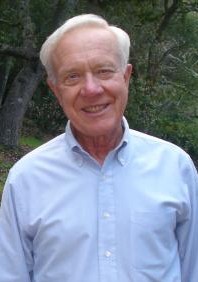-
(b.) - ?1933
Bio/Description
One of the founding researchers in the discipline of Artificial Intelligence (AI), he is the first Kumagai Professor of Engineering (Emeritus) in Computer Science at Stanford University; a position he has held since the chair was established in 1990 through 1995. He is particularly famous for his contributions to search, planning, knowledge representation, and robotics. He received his Ph.D. from Stanford in 1958, and spent much of his career at SRI International (SRI), founded as Stanford Research Institute, an American nonprofit research institute headquartered in Menlo Park, California. He spent twenty-three years at the Artificial Intelligence Center of SRI International working on statistical and neural-network approaches to pattern recognition, co-inventing the A* heuristic search algorithm and the STRIPS automatic planning system, directing work on the integrated mobile robot, SHAKEY, and collaborating in the development of the PROSPECTOR expert system. His research has been based mainly on the premise that intelligence is based on knowledge that must be represented explicitly. Beginning in 1966, he, along with Charles A. Rosen and Bertram Raphael, led a research team in the construction of Shakey, a robot that constructed a model of its environment from sensor data, reasoned about that environment to arrive at a plan of action, then carried that plan out by sending commands to its motors. This paradigm has been enormously influential in AI. (Textbooks such as (Charniak & McDermott 1985), (Ginsberg 1993) and the first edition of (Russell & Norvig 1992) show this influence in almost every chapter, although the entire field has not always stayed under its spell.) Although the basic idea of using logical reasoning to decide on actions is due to John McCarthy (McCarthy), his group was the first to embody it in a complete agent, along the way inventing the A* search algorithm (Hart, Nilsson & Raphael 1968) and founding the field of automated temporal planning. In the latter pursuit, they invented the STRIPS planner (Fikes & Nilsson 1971), whose action representation is still the basis of many of today's planning algorithms. The subfield of automated temporal planning called classical planning is based on most of the assumptions built into STRIPS. In 1985 he became a faculty member at Stanford University, in the Computer Science Department. He was Chair of the department from 1985 to 1990. He was the fourth President of the Association for the Advancement of Artificial Intelligence (AAAI) (1982?83) and a Founding Fellow of that organization. Besides teaching courses on artificial intelligence and on machine learning, he has conducted research on flexible robots that are able to react to dynamic worlds, plan courses of action, and learn from experience. He served on the editorial boards of the journal Artificial Intelligence and of the Journal of Artificial Intelligence Research. He was an Area Editor for the Journal of the Association for Computing Machinery. He is a past-President and Fellow of the Association for the Advancement of Artificial Intelligence and is also a Fellow of the American Association for the Advancement of Science. In 2011, he was inducted into IEEE Intelligent Systems' AI's Hall of Fame for the "significant contributions to the field of AI and intelligent systems". He is a recipient of the IEEE "Neural-Network Pioneer" award, the IJCAI "Research Excellence" award, and the AAAI "Distinguished Service" award. He was a co-founder of Morgan Kaufmann Publishers, Inc. and has written or coauthored several books on AI, including "STRIPS: A new approach to the application of theorem proving to problem solving", Artificial Intelligence 2: 189?208, Fikes, Richard; Nilsson, Nils (1971),doi:10.1016/0004-3702(71)90010-5; Logical Foundations of Artificial Intelligence, Los Altos, CA: Morgan Kaufmann,Genesereth, Michael; Nilsson, Nils (1987); "A Formal Basis for the Heuristic Determination of Minimum Cost Paths", IEEE Transactions on Systems Science and Cybernetics SSC4 4 (2): 100?107, doi:10.1109/TSSC.1968.300136 (1968), Hart, P. E.; Nilsson, N. J.; Raphael, B.; and (1980), Principles of Artificial Intelligence., Palo Alto: Tioga Publishing CompanyHe is a foreign member of the Royal Swedish Academy of Engineering Sciences.
-
Date of Birth:
1933 -
Gender:
Male -
Noted For:
Founding researcher in the discipline of Artificial Intelligence -
Category of Achievement:
-
More Info:


